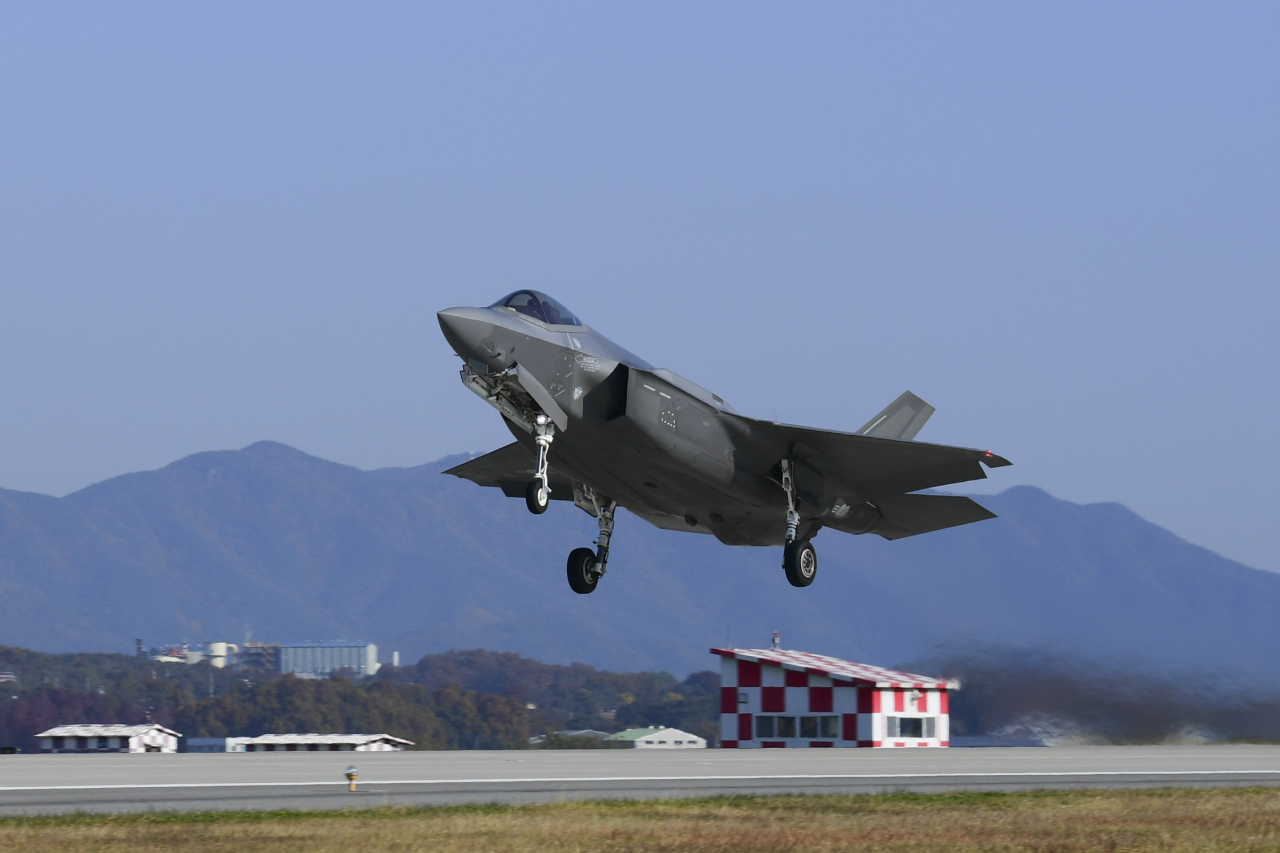S. Korea, US to wrap up joint air drills amid heightened tension with N. Korea
By YonhapPublished : Nov. 5, 2022 - 13:57

South Korea and the United States will end their joint large-scale air drills as planned Saturday after they were extended for a day amid threats from North Korea.
The Vigilant Storm exercise, which kicked off Monday, was originally set to run for five days but was extended by one day in response to North Korea's continued provocations, including the launch of an intercontinental ballistic missile (ICBM) on Thursday.
The combined air training involves some 140 aircraft from the South, including F-35A stealth fighters and F-15K and KF-16 jets, as well as more than 100 US assets, including F-35Bs, EA-18 electronic warfare aircraft and KC-135 tankers.
In apparent protest against the exercise, the North fired dozens of missiles over the training period and even staged large-scale warplane flights on Friday.
On Wednesday, the third day of the drills, Pyongyang fired about two dozen missiles, including a short-range ballistic missile (SRBM) that landed near South Korea's territorial waters for the first time since the end of the 1950-1953 Korean War.
The next day, the North fired an ICBM, which was presumed to have ended in failure, as well as two SRBMs.
In response to the allies' decision that day to extend the exercise, the North accused them of pushing the regional security to an "uncontrollable" stage in a statement by Pak Jong-chon, secretary of the Central Committee of the ruling Workers' Party.
About an hour after the statement's release Thursday night, the North fired three SRBMs into the East Sea. It also fired some 80 artillery shells into the eastern maritime buffer zone set under the 2018 inter-Korean military accord.
The North's provocations come amid concerns that it may soon carry out what would be its seventh nuclear test.







![[KH Explains] Hyundai's full hybrid edge to pay off amid slow transition to pure EVs](http://res.heraldm.com/phpwas/restmb_idxmake.php?idx=644&simg=/content/image/2024/04/18/20240418050645_0.jpg&u=20240419100350)







![[From the Scene] Monks, Buddhists hail return of remains of Buddhas](http://res.heraldm.com/phpwas/restmb_idxmake.php?idx=652&simg=/content/image/2024/04/19/20240419050617_0.jpg&u=20240419175937)

![[KH Explains] Hyundai's full hybrid edge to pay off amid slow transition to pure EVs](http://res.heraldm.com/phpwas/restmb_idxmake.php?idx=652&simg=/content/image/2024/04/18/20240418050645_0.jpg&u=20240419100350)

![[Today’s K-pop] Illit drops debut single remix](http://res.heraldm.com/phpwas/restmb_idxmake.php?idx=642&simg=/content/image/2024/04/19/20240419050612_0.jpg&u=)